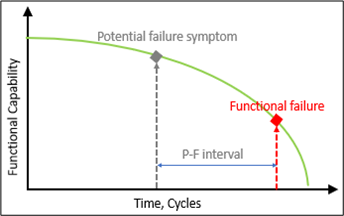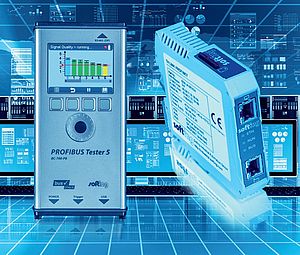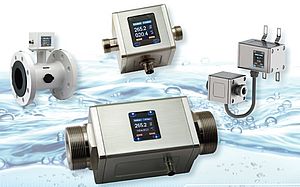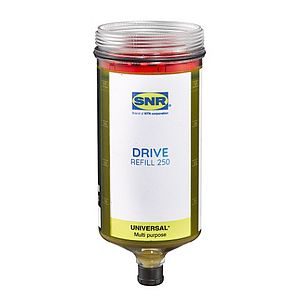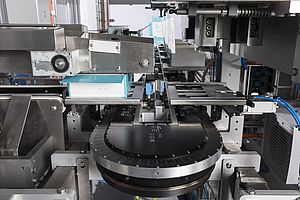Manutenzione Predittiva per sistemi ausiliari di turbogas – AbstractUn caso reale di impiego dei servizi di monitoraggio remoto Baker Hughes S. Cioncolini, C. Michelassi, M. Lauriola Nell'attuale contesto di mercato e grazie alla digitalizzazione, le informazioni provenienti dagli asset industriali acquisiscono un valore sempre maggiore ai fini dell’ottimizzazione delle attività di esercizio e manutenzione. La maggior parte delle applicazioni ad alto valore produttivo, come la liquefazione del gas naturale (LNG), i gasdotti e i grandi impianti industriali, hanno come focus principale l’eliminazione delle cause delle alte perdite di produzione, quali ad esempio gli eventi manutentivi non pianificati o una manutenzione preventiva eccessiva. Viene inoltre richiesta una valutazione continua delle condizioni delle apparecchiature (in termini di funzionalità) per permettere una efficiente gestione del “tempo di manutenzione” in funzione della perdita delle capacità funzionali, e sono estensivamente utilizzati servizi di monitoraggio e diagnostica, capaci di estrarre un elevato numero di informazioni, e capaci di analizzare i dati in modo sempre più avanzato. Questo articolo riporta un esempio reale di analisi diagnostica avanzata, implementata nell’iCenter (il centro di monitoraggio e diagnostica di Baker Hughes, Turbomachinery and Process Solution), utilizzata per scopi di manutenzione predittiva su un Accumulatore Olio di un sistema Turbogas. L’approccio indicato risulta idoneo e può essere implementato su un ampio numero di sistemi, spesso indicati come "sistemi ausiliari" di una macchina più complessa, in questo caso un turbocompressore. L’integrazione della funzionalità e degrado dei singoli componenti in una piattaforma digitale, permette di ottimizzare gli eventi di manutenzione per sistemi complessi. |
1. INTRODUCTION
In the current market environment, with the rising of industrial internet ecosystems, the data coming from industrial assets can be considered like the ‘new oil’, providing very valuable information on the asset operation and performance, thus these data are ready to be valorized. Most of the applications with high value throughput, like natural gas liquefaction (lng), gas transportation pipelines and large industrial plants, are supported with the help of a monitoring and diagnostic service. Advanced data analysis allows continuous assessment of the equipment conditions (in term of functionality) and, for the most critical ones, provides forecast of “time to maintenance” or identifies the loss of functional capabilities. These insights are driving the planning for a predictive maintenance approach, maximizing equipment availability, and reducing unplanned events.
This article reports a real case example of an advanced diagnostic analytic deployed in iCenter (the monitoring and diagnostic center of Baker Hughes, Turbomachinery and Process Solution), used for predictive maintenance purposes. In order to provide actionable insights, analytics have to provide output results with proper accuracy with respect to the limits (both in term of life and performance, where performance is intended as the capability to deliver a result) and ultimately, low false failure alarm rate and high probability of failure detection.
For this purpose, the evaluation and tuning of the model with fleet statistics is crucial, as the selection of a reliable and industrial measurements, able to guarantee reliability on the entire cycle of operations.
Moreover, in order to implement the solution identified by the models on the installed fleet, the proposed solutions rely on standard control instrumentation, without the addition of sensor hardware; it is relevant to note that the use of the data produced for control purposes (in this case the oil delivery pressure) can be postprocessed to synthetize additional parameters, relevant to the equipment health status.
2. SYSTEM DESCRIPTION
The focus of the study applies the predictive maintenance concept to an oil accumulator within a hydraulic oil system designed to deliver the power needed by the actuators to operate valves and variable geometries (vanes, dampers, etc). The simplified schematics of the system are shown in Figure 1. The Accumulator is a device with the purpose to guarantee the delivery of oil flow in transient conditions when pumps are not able to produce enough head. Moreover, the accumulator is able to damp pressure pulsations. In Figure 2 an example of accumulator is shown.
3. ANALYSIS
The approach used in this article leverages on 3 main aspects:
- P-F early warning approach: this is the background strategy of predictive or condition-based maintenance; it looks at the early detection of anomalies to allow the implementation of corrective actions at the proper times.
- Feature extraction: first step of the analytic development; all the models use input features and the proper selection is crucial to facilitate the entire early detection process.
- Statistical fleet/engine analysis: it’s the fundamental step to set analytics thresholds and tune the models.
The following sections explain these concepts in more detail.
3.1 P-F early warning approach
The potential-to-functional failure interval (P-F interval) is the time between the first detectable symptom of the failure and the functional failure, as shown in Figure 3. If the functional failure can be clearly defined as the point where an asset fails to perform a required function, the potential failure symptom is dependent on many aspects, related to detection capabilities, model accuracy, system operating profiles changes and variability of the environment. Moreover, a level of confidence to detect the symptom has to be defined, as a trade-off between the possibility to have false symptoms or consider symptoms too late.
The proposed method is focused on enhancing the capability to detect symptoms with a minimum false rate and as early as possible.
3.2 Feature extraction
Accumulator bladders are pre-charged at periodic intervals with a pressurized gas. As standard operation profile, the gas pressure can decrease over time, with different rates due to several factors, including bladder material degradation, leakages from valves and seals. Pressure can be monitored both on gas (by a manometer) and oil side (by a pressure transducer).
When the hydraulic circuit is pressurized (unit in operation), gas pressure and oil pressure balance each other; therefore, during operations the manometer on gas side provides the same info as the reading on oil side. Only when oil is totally drained, the gas manometer can correctly measure the accumulator pre-charge gas pressure. Seen from the oil pressure transducer side, the reading of the oil pressure will be the same as the gas pressure, until the accumulator is not completely empty of oil. The readings of oil pressure, in the instant when the accumulator stops discharging oil, can therefore be used to indirectly measure the gas pre-charge pressure. This event happens during transients, and a continuous monitoring of the gas pre-charge pressure through oil pressure is not doable.
Instead, it is possible to extract the accumulator gas pre-charge pressure at any gas turbine deceleration. In fact, the oil system is composed by a mechanical oil pump driven by the rotation of the gas turbine shaft. In the deceleration phase, as the oil pump speed decreases, the oil pressure also decreases proportionally (A to B Fig. 4), and the accumulator starts to release oil, compensating the decrease of the oil pressure (B to C Fig. 4), until the oil pressure curve exhibits a knee when accumulator is empty of oil (Point C in Fig. 4). At this moment in time (PVG drop point in the picture), the reading of the oil pressure is used to extract the accumulator gas pre-charge pressure. Analysis of fleet data demonstrated with a good repeatability this behavior, so an algorithm was designed to extract this parameter during the deceleration transient.
3.3 Data Driven analysis
The analysis of several transient points was performed over more than 90 GT units. The profile of the pre-charge pressure value extracted over time has a degradation that is due to the accumulator gas depletion. When the accumulator reaches a minimum threshold for gas pre-charge pressure (the minimum amount of gas required for the accumulator to function), a gas recharge event is required (maintenance). The slope of the degradation is a characteristic of the specific accumulator and provides two important insights: 1) the higher is the slope, the shorter the recharge maintenance cycle is; 2) accumulators showing very high slope require bladder replacement. An example of pressure pre-charge values gathered over time are displayed in Figure 5, together with a data interpolation.
A thorough statistical analysis has been performed to check the slope distribution across the fleet, in order to identify the distribution of the recharge intervals. Moreover, in order to validate the diagnostic capability, the findings from the algorithm were confirmed through field inspections. The results are summarized in Figure 6, which represents the accumulator depletion slope over time, across 90 units. The inspection of the 3 outliers with higher pressure depleting rate, confirmed a failure on the bladder. This data analysis at the end allowed to identify the P and F thresholds for this failure mode.
The accumulator with a slope above the P-limit is considered healthy, and the prediction of the time to the next accumulator maintenance is computed using the identified slope. Whenever the slope goes below the P-limit, the accumulator has an anomalous pre-charge degradation with regards to the observed fleet and a dedicated maintenance workflow is issued. When the slope goes below the F-limit, the accumulator is damaged and requires immediate intervention.
4. CONCLUSIONS
In this paper, the potentiality of the hybrid approach model has been highlighted, where a simple and generic functional degradation model is adjusted to fit the behavior of a complex system, thanks to the field data. As per iCenter Baker Hughes experience, the example of the Oil Accumulator can be successfully replicated over a wide number of systems, like lubricating systems, cooling systems, ventilation systems, filtering systems, often indicated as “auxiliary systems” of a more complex machine, in this case a turbo-compressor.
The insights provided can be easily used in different ways as a predictive approach, feeding the maintenance processes for the concerned assets. The effectiveness of this information is enhanced by its integration in digital platform, able to take into consideration all the inputs from different systems and optimize maintenance events for complex assets.
Stefano Cioncolini, Chief Consulting Engineer Diagnostic and Monitoring Turbomachinery & Process Solutions, Baker Hughes
Carlo Michelassi, Principal Engineer Maintenance & Reliability Turbomachinery & Process Solutions, Baker Hughes
Michele Lauriola, Technical Leader, Digital Services Turbomachinery and Process Solutions, Baker Hughes




